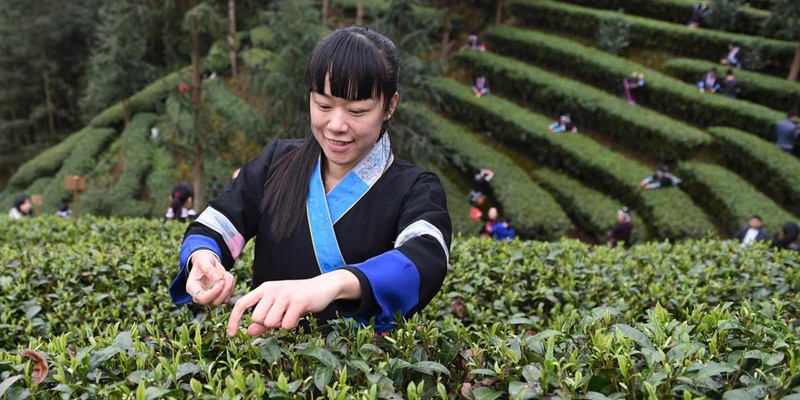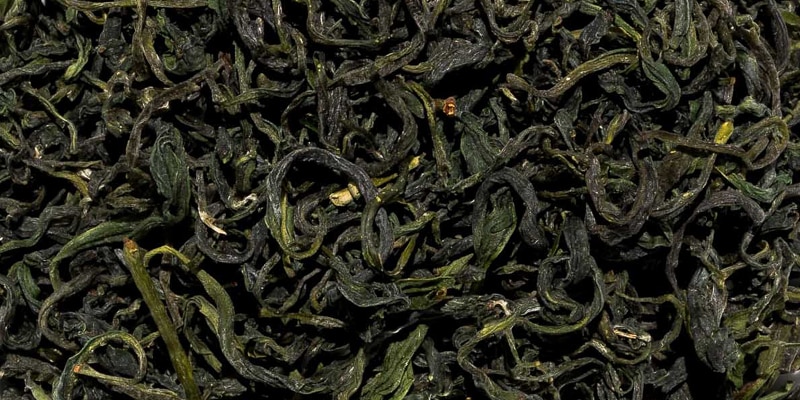Tea and terroir
What is terroir and how does it affect the aroma and flavor of tea? Can this technical term be extended to tea production or is it specific to the world of wine production?

The French word terroir is traditionally used to indicate a well-defined geographic area in which soil, climate, botanical varieties, tradition, and history contribute to producing a specific wine that can by identified by its unique territorial characteristics.
But today terroir is no longer exclusive to the oenological world and has become a concept that’s used for other agricultural products as well, like olives, vegetables, cheeses, cured meats, and, in our specific case, teas. The criteria that bring these so-called “typical products” to our tables are summed up in this very broad concept.
Just like with wines, the specific, unique, and inimitable character of a tea can be traced to its place of origin. The taste and aroma of a tea is strongly affected by:
- climate and humidity;
- type and location of the terrain;
- composition and quality of the soil;
- biodiversity (flora and fauna);
- human influence (specifically, the traditional cultivation, harvesting, and processing techniques that have been passed down from generation to generation).
We’re now going to examine how every single factor mentioned above has an impact on tea.
CLIMATE
Tea grows abundantly between the Tropics of Cancer and Capricorn, an area characterized by a warm and humid climate. The harvests are also influenced by the alternating seasons. During colder and drier months growth is slower, allowing the leaves greater time to develop complex and subtle aromas. Meanwhile, during the warm summer months, rapid growth causes simpler and flatter flavors, less complex aromas, and, often, a bitter taste to emerge. Elevation also contributes to creating aromatic complexity. Furthermore, climate determines the production potential and the effective yield of each harvest, season after season, year after year.
TERRAIN
Tea is one of the most demanding tropical crops in terms of soil conditions. The many different kinds of soil in which tea is successfully cultivated makes it difficult to create a general classification of suitable terrain. The type (rocky, clayey, hilly, flat, well-drained…) and the chemical composition of the terrain (rich in or lacking minerals, with an optimal acidic pH between 4.5 – 5.5) are factors which impact or determine the unique characteristics of the terroir. The orientation of the plantations and their exposure to sunlight also influence the taste and aroma of a cup of tea. For example, from tea gardens with a northern and western exposure, where the sun is less intense, we expect a high quality harvest year round.
BIODIVERSITY
A terroir is a complex ecosystem thanks to the presence not only of the tea plants, but also of spontaneous vegetation (like flowers, grass, conifers, and fruit trees), animals, insects, bacteria, and fungi.
HUMAN INFLUENCE
Why is it so difficult to define a terroir? Simple: because the environment is difficult to modify and therefore the tea plant must adapt to the various characteristics of the region in which it grows and develops. It’s not just a question of the perfect terrain for cultivating Camellia Sinensis. The concept of terroir extends well beyond natural factors. We often forget that, like wine, producing tea is similar to creating a work of art, and only the hands of a master, aided by science and by proper farm management, can ensure that potential turns into success. Without this overall vision and collective knowledge, tea products would be entirely lacking in identity and character. The human factor, therefore, explains the reason why both premium teas and those of inferior quality can be found in the same production areas.
Let’s now take a look at the most well-known and most esteemed terroirs in each of the tea-producing countries.

CHINA AND ITS TERROIRS
The territory dedicated to the cultivation of tea is so large and influenced by such a wide variety of climatic and geographic conditions, that we can more or less divide China into four macro-areas: southwest, southeast, and the areas situated respectively north and south of the Yangzi Jiang river. Because of each region’s unique and distinctive characteristics, the teas often take the name of the region in which they were cultivated and processed.
The production area in the southwest includes the provinces of Guizhou, Sichuan, and Yunnan. The last of these, with its ancient and wild plants, is considered tea’s “cradle”, the mountains where it all began, and is world famous for its Pu’er fermented black teas and its Dian Hong oxidized red teas (known as black tea in the West).
Guangdong, Fujian, and Guangxi are located in the southeastern region. Here we find the great classics of the six tea families and, in particular, white teas (Bai Hao Yin Zhen, Bai Mu Dan) and oolong teas (Da Hong Pao, Rou Gui, Anxi Tie Guan Yin).
The provinces of Henan, Gansu, Shandong, and the northernmost parts of Anhui, Jiangsu, and Hubei are located in the area north of the Yangzi Jiang river. These gardens represent the most recent tea production areas due to their more rigid climate and steep slopes. Nevertheless, very interesting green teas are produced here, like the Liu An Gua Pian and Huo Shan Huang Ya, to name the most popular.
The provinces of Zheijiang, Hunan, Jianxi, and the southernmost parts of Anhui, Jiangsu, and Hubei are located in the area south of the Yangzi Jiang river. It’s been calculated that this area is responsible for approximately two thirds of China’s tea production. Hills with good exposure to the sun and a well-drained terrain guarantee a harvest of high quality teas, in particular the Long Jing, Angi Bai Chai, and Huang Shan Mao Feng green teas and the very famous Keemun oxidized red teas. To simplify, premium Chinese oxidized red teas feature a complex bouquet, in which floral scents and notes of honey, cocoa, leather, and cooked fruit blend together perfectly and harmoniously. Meanwhile, the green teas release a sweet floral and nutty fragrance (in particular walnut and chestnut) and, in some cases, pleasant and subtle smokey notes. You can find more information on the aromatic profiles of tea in this article.
INDIA AND ITS TERROIRS
In India there are four main terroirs: Darjeeling, Assam, Nilgiri, and the Kangra Valley. Other than these four, the emerging production areas are located in the northeastern part of the country: Meghalaya, Mizoram, Sikkim, and Manipur. The most well-known and popular in the world market are:
- Darjeeling teas, considered the Champagne of Indian teas, which feature intense notes of muscatel, a medium body, and a lively quality;
- Assam teas, known for their strong body and intense malted and honey notes.
SRI LANKA AND ITS TERROIRS
The seven major regions of Ceylon tea are: Kandy, Dimbula, Nuwara Eliya, Uda Pussallawa, Uva, Ruhuna, and Sabaragamuwa. The different elevations, the monsoon rains, and the climate (varying from cold and dry to hot and humid) contribute to producing a wide selection of very exotic teas that range from light and citrusy to full-bodied and balsamic.
JAPAN AND ITS TERROIRS
In Japan, the concept of terroir primarily applies only to the grands crus. In fact, almost the entire production is the result of blends of teas from different gardens in the same area or sometimes even from other prefectures. Shizuoka is the primary production area and features teas with a very complex aromatic profile. Then come the prefectures of Kyoto (its Uji teas are popular all around the world), Kagoshima (of note are the gardens in Miyazaki, Kirishima, Fukuoka, and Saga), Nara, and Mie. Whether it’s a single origin green tea or a blend, in the cup it will be a bright yellow-green color and offer refreshing and aromatic sensations as well as the typical grassy, marine, and umami taste that characterizes Japanese teas.

TAIWAN AND ITS TERROIRS
Thanks to its mountains, which exceed 2000 meters asl, the abundant rain, and tropical climate, Taiwan gives us delicate, velvety teas with fragrant notes of flowers, fruit, butter, and vanilla. Excellent teas like Dong Ding oolong tea and Sun Moon Lake oxidized red teas come from the Nantou district. Oolong teas in the style of Bao Zhong (literally “wrapped in paper”, from the ancient custom some merchants had of presenting these twisted tea leaves in paper) are produced near Taipei, while the best Bai Hao (Oriental Beauty) come from the Hsinchu district, located in the northwestern part of the island. Speaking of Taiwan’s outstanding products, the Gao Shan are high mountain (high-altitude or high grown) teas. The most popular grow between 1,000 and 1,700 meters asl along the slopes of the Ali Shan and Li Shan mountain ranges. A way to truly pamper your palate!
In addition to the primary production areas described above, other countries to discover and keep an eye on are Vietnam, Indonesia, Korea, Nepal, Kenya, Malawi, Uganda, Rwanda, Iran, Georgia, Turkey, and Argentina.
In conclusion, every cup of tea tells a story made up of places, landscapes, traditions, and culture.
Ready to join the Vinhood family?
Vinhood is the First Italian Taste Agency. We explore the world of taste to guide people about how to choose and consume products and supporting companies in nurturing personalized relationships with their customers.
Read more
- The volcanic soil of Hawaii: a paradise for tea
 A new emerging terroir to keep an eye on with interest is located in the middle of the Pacific Ocean, in Hawaii. Let’s discover it together!
A new emerging terroir to keep an eye on with interest is located in the middle of the Pacific Ocean, in Hawaii. Let’s discover it together! - Producer of Tea, Part 1
 It’s a well-known fact that India comes in second in the global ranking of the primary tea-producing countries. But before we look more closely at India’s tea producing regions, let's go back about two centuries.
It’s a well-known fact that India comes in second in the global ranking of the primary tea-producing countries. But before we look more closely at India’s tea producing regions, let's go back about two centuries. - The season for Chai - Part 2
 The season for chai is here. All you need to do now is learn how to make it at home, with an exceptional recipe!
The season for chai is here. All you need to do now is learn how to make it at home, with an exceptional recipe!

